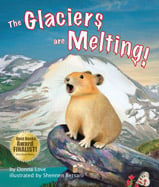Alignment to Standards for MS

| Grade | Number | Standard |
|---|---|---|
| 1 | 1)3.a. | Classify animals and plants by observable features (e.g., size, appearance, color, motion, habitat). |
| 1 | 1)3.b. | Identify Earth landforms and bodies of water (e.g., continents, islands, peninsulas, oceans, rivers, lakes, ponds, creeks). |
| 1 | SS 1)3. | use social studies tools (e.g., timelines, bar graphs, pictographs, globes, school maps, etc.). (C, H, G, E) |
| 1 | SS 1)5.a | Identify settings of read-aloud stories as geographic locations |
| 2 | 2)3.a. | Describe and categorize the characteristics of animals (vertebrates or invertebrates, cold-blooded or warm-blooded) |
| 2 | 2)3.e.1 | Investigate and explain the interdependence of plants and animals: Herbivore, carnivore, or omnivore |
| 2 | 2)4.a. | Categorize different types of Earth materials, (e.g., rocks, minerals, soils, |
| 2 | 2)4.d. | Distinguish how actions or events related to the Earthês environment may be harmful or helpful. |
| 2 | SS 2)3. | use social studies tools (e.g., timelines, compass, maps, globes, graphs, etc.). (C, H, G, E) |
| 3 | 3)3.a. | diverse life forms (including vertebrates and invertebrates) that live in different environments (e.g., deserts, tundras, forests, grasslands, taigas, wetlands) and the structures that serve different functions in their survival (e.g. |
| 3 | 3)3.c. | relationships between the basic needs of different organisms and discern how adaptations enable an organism to survive in a particular environment. |
| 3 | 3)3.e. | Recall that organisms can survive only when in environments (deserts, tundras, forests, grasslands, taigas, wetlands) in which their needs are met and interpret the interdependency of plants and animals within a food chain, including producer, consumer, d |
| 3 | 3)4.b. | Compare and contrast changes in the Earthês surface that are due to slow processes (erosion, weathering, mountain building) and rapid processes (landslides, volcanic eruptions, earthquakes, floods, asteroid collisions). |
| 3 | SS 3)1.b | how human activities alter the environment ( reservoirs, dams, slash and burn forests, construction). |
| 3 | SS 3)3. | use social studies tools (e.g., timelines, maps, globes, compasses, graphs, technological resources, grids, schedules, etc.). (C, H, G, E) |
| 3 | SS 3)3.a | Use maps and globes to find relative and absolute locations in regard to different communities (e.g., spatial perspective, longitude, latitude, etc.). |
| 3 | SS 3)5.b | Compare/contrast animals/habitats from different countries (elephants, lions, zebras, desert, savannah, etc.). |
| 4 | 4)3.a.1 | Observable traits due to inherited or environmental adaptations |
| 4 | 4)3.a.2 | Variations in environment (over time and from place to place) |
| 4 | 4)3.c. | Compare characteristics of organisms, including growth and development, reproduction, acquisition and use of energy, and response to the environment. |
| 4 | 4)3.c.2 | Plant or animal structures that serve different functions in growth, adaptation, and survival |
| 4 | 4)4.b.1 | Compare and contrast Earthês geological features: Bodies of water, beaches, ocean ridges, continental shelves, plateaus, faults, canyons, sand dunes, and ice caps |
| 4 | 4)4.b.2 | Compare and contrast Earthês geological features: External forces including heat, wind, and water |
| 4 | SS 4)3. | use social studies tools (e.g., timelines, maps, primary sources, globes, compasses, graphs, technological resources, grids, schedules, etc.). (C, H, G, E) |
| 5 | 5)3.a. | diversity of organisms due to adaptations to show how organisms have evolved as a result of environmental changes. |
| 5 | 5)3.a.1 | Diversity based on kingdoms, phyla, and classes (e.g., internal/external structure, body temperature, size, shape) |
| 5 | 5)3.a.2 | Adaptations that increase an organismês chances to survive and reproduce in a particular habitat (e.g., cacti needles/leaves, fur/scales) |
| 5 | 5)3.b.1 | Research and classify the organization of living things: Differences between plant and animal cells |
| 5 | 5)3.e. | Give examples of how consumers and producers are related in food chains and food webs. |
| 5 | 5)4.a.1 | Categorize Earthês materials: Rocks, minerals, soils, water, and atmospheric gases |
| 5 | 5)4.b. | Explain how surface features caused by constructive processes (e.g., depositions, volcanic eruptions, earthquakes) differ from destructive processes (e.g., erosion, weathering, impact of organisms). |
| K | K)3.a | Group animals and plants by their physical features (e.g., size, appearance, color). |
| K | K)4.b. | Identify and describe properties of Earth materials (soil, rocks, water, and air). |
| K | K)4.d. | Describe ways to conserve water. |